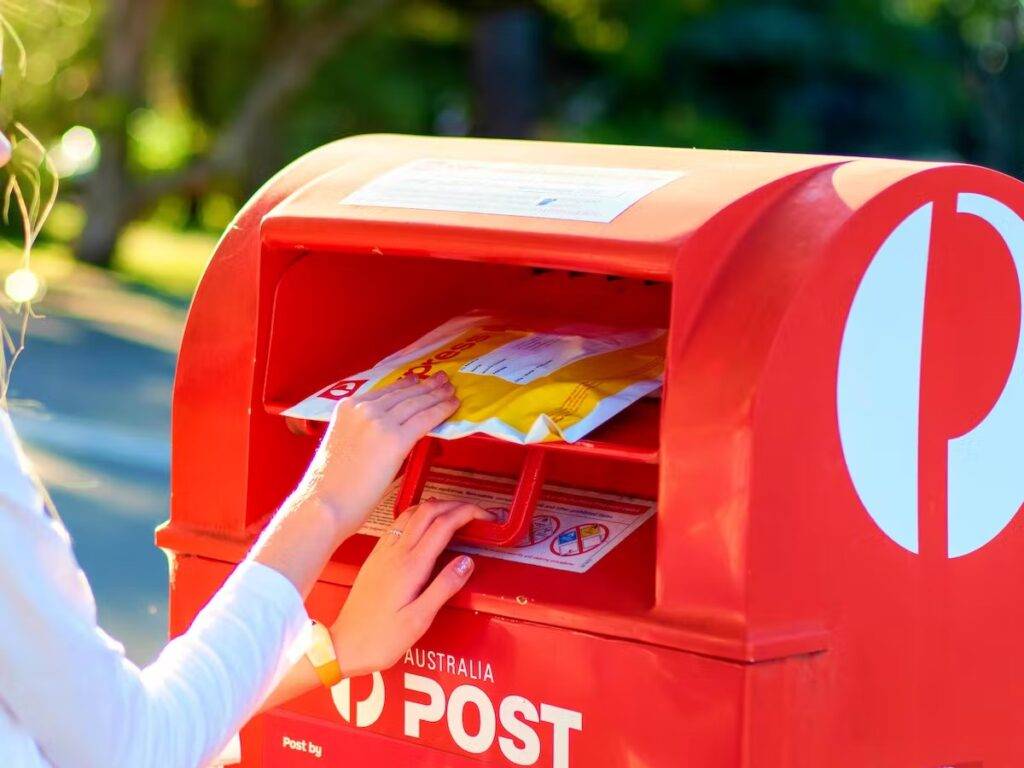Calendula Pacific Beauty
$4.95
Calendula Officinalis
- Seed Count 125
- Easy To Grow
- Annual
- Height 60 cm
In stock
Description
Calendula Pacific Beauty has large flowers in a mix of warm colours including orange, yellow and apricot. Calendula are considered by many gardening experts as one of the most versatile flowers to grow in a garden, especially since they are easy to grow, and tolerate most soils. Like most hardy annuals, they can be simply sown where they are to flower. They are tolerant of any well-drained soil, even quite poor ones.
Cheerful and bright, use Calendula alone or in combination with other flowering annuals and perennials in beds, borders or containers. Calendula are prolific and durable and so are perfect candidates for cutting and flower arrangements.
A common name for the calendula is ‘Pot Marigold’ because the outer petals of the flower are used in cooking as both flavouring and colouring agent in soups, stews, cheeses, and margarine. The tangy petals can be sprinkled into salads and used to decorate cakes or feed them to chickens to produce dark coloured yolks. The petals can also be used as a substitute for saffron.
The plants are also an excellent companion plant because of their insect repelling properties. They were once used as a herbal remedy in broths “as a comforter of the heart and spirits” and the flowers are also used in skin and cosmetic preparations due to its soothing properties.
| Method: Sow direct or seedlings | Soil Temp: 10°C - 30°C |
| Cool Mountain: Sep - Mar | Germination: 7 - 14 days |
| Arid: Jan - Dec | Position: Part shade |
| Temperate: Sep - May | Row Spacing: 50cm apart |
| Sub Tropical: Jan - Dec | Planting Depth: 5 mm |
| Tropical: Apr - Jul | Harvest: 75 days |
Basics
- Capsicum (sweet/bell Capsicum) thrives in warm, sunny gardens.
- Plant them in a spot with full sun (6+ hours) and rich, well-drained soil.
- Prepare the bed by removing weeds and digging in plenty of compost or aged manure.
- Use mulch around plants to retain moisture and suppress weeds.
Seed Trays vs Direct Sowing
Seedling Trays:
- Raise seeds in pots or trays filled with seedling mix, keeping them warm (16-35°C) and moist.
- This protected start speeds germination and gives plants a head start on weeds and weather.
- You’ll use fewer seeds and get sturdy seedlings for an earlier crop.
- The downside is extra effort and cost (pots, mix, heat source) and you must harden-off seedlings before planting out.
Direct Sowing:
- Plant seeds 3mm deep in the garden soil 50cm between plants, 60–100cm once it’s warm and frost-free.
- Direct sowing is simpler and cheaper (no trays or special mix), but germination is slower and more vulnerable to cold, pests or heavy rain.
- Capsicum seeds can take 1–3 weeks to sprout at 16–35°C.
- Ensure the soil stays evenly moist (not waterlogged) during this time.
In short: use trays if you want the best germination and an early start; sow direct if you prefer simplicity and have already warm conditions.
Planting and General Care
Timing & Spacing:
- Plant or transplant capsicum after all danger of frost has passed.
- In tropical/subtropical areas, Capsicums can even fruit year-round, but in cooler zones treat them as an annual summer crop.
Soil:
- Use well-drained, fertile soil rich in organic matter.
- Work in compost or aged manure before planting.
- Capsicums prefer a slightly acidic to neutral pH (~6.0–7.0).
- In pots, use at least ~40L per plant.
Watering:
- Water deeply and regularly, so the soil stays evenly moist.
- Check soil moisture by pushing a finger 4–5cm down; water when that layer is just dry.
- Water in the early morning or late afternoon to minimize stress.
- Avoid wetting the leaves, which can encourage fungal disease.
- Mulch around plants to keep roots cool and reduce evaporation.
Fertilising:
- If the soil was well-prepared, you may need little extra feed.
- Otherwise, apply a balanced (e.g. 10-10-10 NPK) slow-release fertilizer at planting.
- Once flowers and fruit start, give a liquid tomato or vegetable fertilizer every few weeks according to label directions.
- This supports heavy fruiting. Avoid excessive nitrogen late in the season, as it can reduce fruit set.
Staking & Pruning:
- Capsicum plants can get top-heavy with fruit. Stake or cage them when planting.
- A simple sturdy stake beside each plant works – gently tie the main stem (e.g. with soft string) as it grows.
- This prevents wind damage and keeps fruit off the ground.
- Remove any low or damaged leaves to improve air flow.
- Many gardeners also pinch out a few early flower buds when plants are young – this encourages stronger vegetative growth and heavier later yields.
- Overall, little pruning is needed beyond this.
Pest & Disease Management:
- Monitor plants for pests like aphids, caterpillars, slugs/snails, and chilli thrip.
- Hand-pick pests or use organic sprays if needed.
- Practice good hygiene: remove weeds and crop debris.
- Rotate capsicum/solanaceous crops to a different spot each year to reduce disease pressure.
- Common diseases include blossom-end rot (from inconsistent watering or low calcium) and fungal spots.
- Regular watering and mulch help prevent blossom-end rot.
- Crop rotation and not overcrowding plants also reduce problems.
Chilli Thrips: What They Are & How to Deal With Them
- Chilli thrips (Scirtothrips dorsalis) are tiny, slender insects that can cause big problems in home veggie patches—especially for capsicum, chilli, eggplant, and tomato plants.
- You might not see them easily (they’re less than 2mm long!), but the damage is easy to spot as leaves curl or look bronzed and scarred, buds drop off, and fruit can become deformed or scarred.
- These pests feed by piercing plant tissue and sucking out the juices, which leads to silvery or brown patches on leaves and distorted growth.
- They tend to hang out on the newest growth, flower buds, or the undersides of leaves—so grab a magnifying glass and check these spots first if your plants are looking stressed.
What You Can Do:
Prevention is key:
- Start clean – Avoid bringing in infested seedlings or cuttings.
- Attract beneficial bugs like lady beetles, lacewings, and predatory mites—they’ll help keep thrip numbers down.
- Plant flowers like alyssum, marigold, or dill nearby to draw in the good guys.
If they show up:
- Prune affected areas early to stop the spread.
- Hose them off gently with water to dislodge thrips from foliage.
- Apply insecticidal soap or horticultural oil, covering all leaf surfaces, especially underneath. Repeat weekly as needed.
- Rotate your crops each year to disrupt their lifecycle.
Tip: Thrips love hot, dry conditions—so keep your plants well-watered and mulched to reduce stress and deter infestations.
Companion Planting with Capsicum
Good companions:
- Herbs & Flowers: Basil, dill, parsley, coriander, chamomile and other aromatic herbs as they attract beneficial insects and may repel aphids or whiteflies. Garlic, onions, chives as their strong scent deters many pests. Marigolds, nasturtiums, borage, lavender as these flowers lure pollinators and trap pests (marigolds are famous for nematode control).
- Vegetables: Carrots, lettuce, spinach as they occupy shallow roots and don’t compete much with Capsicums. These can provide light ground cover under Capsicum plants. Tomatoes are sometimes planted alongside Capsicums (both like similar conditions) but be aware they share some pests/diseases so give them space and rotate beds regularly.
- Fruits: Strawberries and cucumbers have been noted as decent neighbours (shallow roots and shade from cucumber leaves can protect Capsicums).
Bad Companions
- Other heavy feeders or close relatives.
- Do not grow next to eggplants, potatoes or tomatoes in succession, as they share pests/diseases.
- Stay away from beans/peas and plants like fennel or dill, which can inhibit Capsicum growth.
- Squash and pumpkins (deep-rooted cucurbits) can out-compete Capsicums for nutrients.
- In short, pair Capsicums with light-feeders and pest-deterring plants, and keep them apart from other nightshades and big gourds.
Seed Saving
Saving your own Capsicum seeds is easy if you follow a few simple steps:
Select plants:
- Pick the healthiest plants with strong, typical fruit.
- If growing multiple types, isolate them (e.g. bag flowers or keep 20m+ apart) to prevent cross-pollination.
Harvest ripe fruits:
- Wait until Capsicums are fully ripe on the plant which is usually when they’ve changed to their final colour and just start to soften or wrinkle.
- Allowing fruits to over ripen a little ensures the seeds are mature.
Extract seeds:
- Cut the Capsicum in half and scoop or twist out the central core.
- Scrape out the seeds and remove as much of the inner flesh and pith as possible.
- Rinse the seeds in clean water to wash off any remaining pulp which helps them dry cleanly.
Dry seeds:
- Spread the seeds in a single layer on paper towels or a clean plate in a dry, shaded place.
- Let them dry completely over several days.
- They’re ready when you can crunch a seed in your fingers and it snaps rather than bends.
- Moisture is the enemy of seed storage, so make sure they feel fully dry.
Store seeds:
- Transfer the dried seeds to a paper envelope or small jar with a tight lid.
- Label with variety and date.
- Store in a cool, dark, dry spot (a refrigerator works well).
- Properly stored Capsicum seeds remain viable for about 3–4 years, so you’ll have plants for many seasons.
Climate and Seasonal Considerations
- Calendula can be grown in all parts of Australia.
- It thrives in best temperatures between 15°C and 20°C but can tolerate warmer temperatures if adequately watered.
Soil Requirements
- Calendula prefers well-draining soil with moderate fertility.
- It tolerates a wide range of soil types, including sandy, loamy, and clay soils, but performs best in slightly acidic to neutral pH (6.0–7.0).
- Amend heavy clay soils with compost or organic matter to improve drainage.
Planting
Seed Starting
- Sow seeds directly into the garden or start them indoors 4–6 weeks before the last frost date. Seeds germinate in 7–14 days at 10–30°C.
Spacing
- Plant seeds or seedlings 50 cm apart to allow for adequate air circulation.
Depth
- Sow seeds 5 mm deep and cover lightly with soil.
Transplanting
- If starting indoors, transplant seedlings outdoors after the risk of frost has passed and they have developed 2–3 true leaves.
Sunlight and Watering
Sunlight
- Calendula prefers full sun but can tolerate partial shade, especially in hotter regions.
- In areas with intense summer heat, provide afternoon shade to prevent wilting.
Watering
- Water regularly to keep the soil moist but not waterlogged.
- Once established, calendula is somewhat drought-tolerant.
- Avoid overhead watering to reduce the risk of fungal diseases.
Fertilising
- Calendula is not a heavy feeder.
- A light application of compost or a balanced organic fertiliser at planting time is sufficient.
- Over-fertilising can lead to excessive foliage growth at the expense of flowers.
Maintenance
Deadheading
- Remove spent flowers regularly to encourage continuous blooming and prevent self-seeding (if desired).
Mulching
- Apply a layer of mulch around plants to retain soil moisture, suppress weeds, and regulate soil temperature.
Pests and Diseases
- Calendula is relatively pest-resistant but may attract aphids, whiteflies, or spider mites.
- Use insecticidal soap or neem oil to manage infestations.
- Prevent powdery mildew by ensuring good air circulation and avoiding overhead watering.
Harvesting
- Harvest flowers when they are fully open, preferably in the morning after the dew has dried.
- Use fresh petals in salads or dry them for teas, salves, or culinary uses.
- Regular harvesting promotes more blooms.
Companion Planting with Calendula
Benefits of Calendula in Companion Planting
- Pest Repellent: Calendula’s strong scent deters pests such as aphids, whiteflies, and nematodes.
- Attracts Beneficial Insects: The bright flowers attract pollinators and beneficial insects that prey on garden pests.
- Soil Health: Calendula’s roots help improve soil structure and suppress weeds.
- Aesthetic Appeal: Its vibrant blooms add colour and beauty to the garden.
Best Companion Plants for Calendula
- Tomatoes: Calendula repels tomato hornworms and other pests.
- Carrots: Calendula deters carrot flies and improves carrot growth.
- Lettuce and Leafy Greens: Calendula’s pest-repellent properties protect these crops.
- Beans and Peas: Calendula attracts pollinators, which can improve yields.
- Herbs: Calendula complements herbs by deterring pests and adding visual appeal.
- Brassicas: Calendula helps repel pests like cabbage moths.
Plants to Avoid
- Avoid planting calendula near fennel or dill, as these plants can inhibit its growth.
How to Use Calendula in Companion Planting
- Interplanting: Scatter calendula plants throughout the garden to maximize their pest-repellent and pollinator-attracting benefits.
- Border Planting: Plant calendula around the edges of garden beds to create a protective barrier.
- Trap Cropping: Use calendula as a trap crop to attract pests away from more valuable plants.
Additional Tips for Growing Calendula
Hot and Dry Regions:
- In areas with intense summer heat, grow calendula in partial shade and mulch heavily to retain soil moisture. Water deeply but infrequently to encourage deep root growth.
Humid Regions:
- Ensure good air circulation and avoid overhead watering to prevent fungal diseases like powdery mildew.
Container Growing:
- Calendula grows well in pots. Use a well-draining potting mix and ensure the container has drainage holes. Place the pot in a sunny location and water regularly.
Self-Seeding:
- Allow some flowers to go to seed if you want calendula to return the following year.
- Thin seedlings as needed to prevent overcrowding.
Troubleshooting Common Issues
Pests
- Aphids and Whiteflies: Spray with insecticidal soap or neem oil.
- Spider Mites: Increase humidity and spray plants with water to dislodge mites.
Diseases
- Powdery Mildew: Improve air circulation, avoid overhead watering, and apply a fungicide if necessary.
- Root Rot: Ensure well-draining soil and avoid overwatering.
Poor Flowering
- Causes: Over-fertilizing, insufficient sunlight, or overcrowding.
- Solutions: Reduce fertilizer, provide more sunlight, and thin plants as needed.
Postage Charge
Orders under $30 attract a $4.95 shipping charge. Orders $30 and above have free shipping.
Order Times
Seed orders are normally dispatched within three business days. You will receive an email when seeds are mailed out.
Postage Days
Seeds are mailed out Monday to Friday at 1pm. Except for the Friday of long weekends.
Postage Times
WA 2-3 Days: SA,NT 3-5 Days: NSW, ACT, QLD, VIC: 5-7 Days
Carrier
We use Australia Post Letter Postage for the majority of orders
Not only are our seeds packed in recycled paper envelopes, we keep the theme going when we post out website orders. To protect your seeds from moisture and the letter box munchers (snails), we use a very special plastic free material made from plants. They are then put into recycled mailing envelopes. Green all the way 💚🌿












1 review for Calendula Pacific Beauty